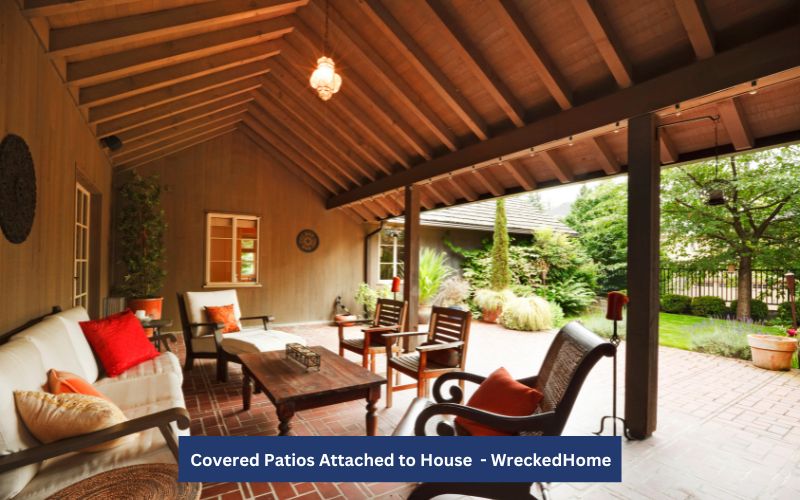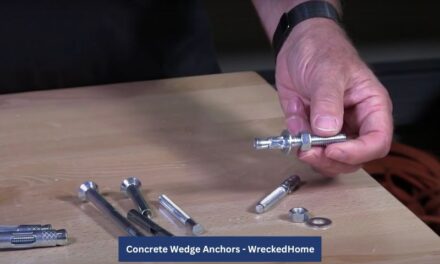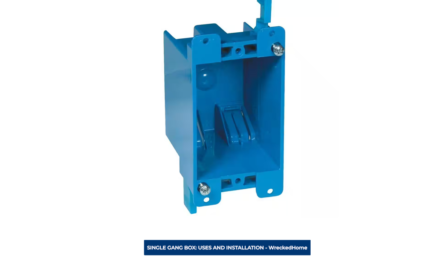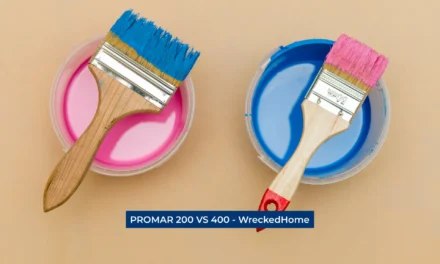Building covered patios attached to house have gained immense popularity as a sought-after home improvement project and the reasons are clear. Whether you envision a cozy spot for reading and sipping your morning coffee or a space for your outdoor space thoughtfully designed covered patio, this also offers protection from various weather conditions, whether it’s the intense sun or light rain.
However, embarking on such a project requires careful planning and consideration to provide an inviting spot for gatherings, relaxation, and even outdoor dining.
Embarking on the project to build covered patios attached to house also has the potential to boost your home’s associated costs. A well-crafted, visually appealing patio can serve as a selling point for potential buyers, when you decide to sell your home.
The purpose of this comprehensive guide is to delve into the process of necessary preparations, materials, and labor involved. Let’s explore topics ranging from different types of patios and material options helping you make informed decisions to turn your patio dreams into reality.
Whether you’re a seasoned DIY enthusiast or planning to hire professionals, average expenses for building a covered patio falls between $2,000 to $30,000, encompassing installation, labor, and material costs. On a per square foot basis cost is in the range of $25 to $40.
Let’s get started to acquire all the essential knowledge to know about building your own haven—right in your backyard.
The Average Cost to Build Covered Patios Attached to House
Determining the cost of constructing covered patios attached to house involves various factors which influence the overall cost. These variables encompass the patio’s dimensions, the size of the patio, the materials used, labor costs, and whether or not additional features such as electrical wiring for lighting or fans are included. The geographical location can also play a role in given the regional disparities in labor and material costs.
In terms of ballpark figures, a smaller, simpler patio cover using budget-friendly materials might set you back around $2,000 to $5,000. Conversely, opting for a larger, more opulent space outfitted with high-end materials can easily exceed $30,000.
Crucially, the decision between hiring professionals and embarking on a DIY venture significantly impacts your expenses. Labor typically accounts for approximately 40-50% of the total expenses.
If you’re handy and have the time to spare, tackling the project could save you a substantial amount. However, it is important to note that the DIY approach entails its own set of challenges, including the need for specialized tools and potential permit requirements.
Patio Roof Materials: Average Costs
One of the most important decisions in building covered patios attached to house is selecting the right roofing material. This decision has impacts of both aesthetic appeal and the cost. Different materials come with their own advantages, disadvantages and price tags, and understanding these can help you make a well-informed decision.
Average Cost of Roofing Materials
Here is a breakdown of the average costs associated with various roofing materials:
Wood
- Average Cost: $5,000–$19,000
- Cost Per Sq Ft: $15–$35
- Wood offers a natural, inviting appearance but requires regular maintenance like staining or painting to prevent deterioration.
Aluminum
- Average Cost: $2,000–$10,000
- Cost Per Sq Ft: $20–$70
- Aluminum is robust and virtually maintenance-free but can be more expensive with initial costs.
Fabric
- Average Cost: $1,700–$2,870
- Cost Per Sq Ft: $5–$16
- Fabric permits more natural light and is low cost. It is less durable or weather resistant as other materials.
Vinyl
- Average Cost: $2,500–$6,000
- Cost Per Sq Ft: $5–$13
- Vinyl is another low-maintenance option for patios that has a different lifespan as wood or metal.
Glass
- Average Cost: $2,000–$30,000
- Cost Per Sq Ft: $25–$45
- Glass offers an unobstructed view and ample natural light. It requires regular cleaning and is more costly than other alternatives.
Your regions climate, budget and aesthetic preferences are key factors in choosing the right materials for covered patios attached to house. Each material comes with its own unique set of characteristics, so carefully consider your priorities before making a decision. The right type of material not only boosts your home aesthetic but also impacts roof functionality.
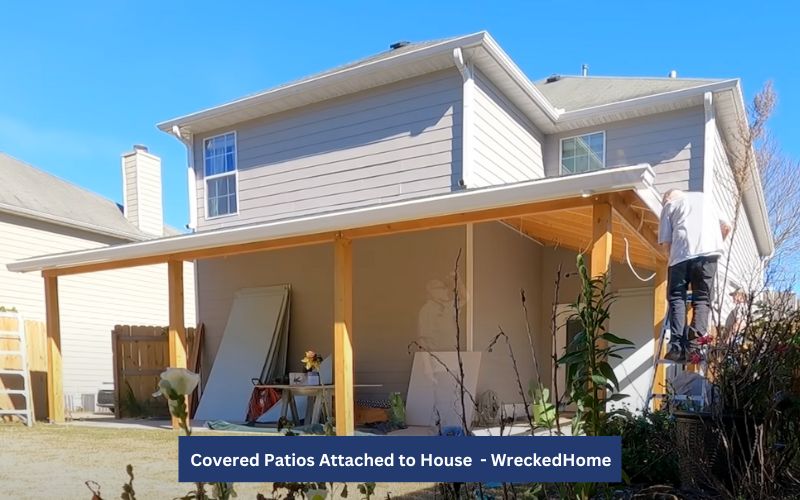
What Type of Patio Is Best?
There are no magic steps in choosing a good type of covered patios attached to house. There are several factors to consider before making a final choice. There are some key considerations that can guide you to make an informed decision:
1. Budget Constraints
Budget is important and a basic factor that needs to be considered in choosing covered patios attached to house. Some of the budget constrains according to material are
- Wooden Patios: When it comes to budgeting, wooden patios are a substantial investment, many find the atmosphere they create to be well worth the cost. Although it is expensive some offer a rustic, natural look.
- Aluminum or Vinyl: On the other end of the spectrum, aluminum or vinyl patios are budget-friendly. The minimal maintenance requirement makes it cost effective with long run properties.
- Fabric: A Fabric patio provides flexibility and is generally more affordable. But one thing that makes it a difficult choice is the upkeep requirement to maintain their appearance.
- Glass: Glass patios are usually beautiful as it provides an unobstructed view and ample natural light. That can enhance the overall experience of your outdoor space.
2. Climate Considerations
The climate in your area heavily influences the best material for your covered patios attached to house. So you must choose a material that supports your climate
- Wood: Wooden patios, while beautiful, are susceptible to the elements and needs regular maintenance, especially in wet or humid climates.
- Aluminum or Vinyl: These are Durable and virtually weatherproof that make them a robust choice for a wide range of climates.
- Fabric: they are less resilient to extreme weather conditions therefore may not be the best option for areas with heavy rainfall or snow.
- Glass: Ideal for all-season enjoyment but may require climate control measures like heating or cooling.
3. Usage and Lifestyle
To make your home more appealing and to show your personal preferences consider your lifestyle and how you plan to use your patio.
- Wood: for those who value a natural aesthetic and love activities like outdoor cooking, a wooden patio is an excellent choice with its heat-resistant properties.
- Aluminum or Vinyl: If you value everyday use and easy to maintain patio then vinyl patios fit the bill perfectly.
- Fabric: Fabric patios are suitable for temporary or seasonal use. It is easy to replace in nature.
- Glass:, Although Glass patios are visually appealing, ideal for those who desire a year-round outdoor living space. It can control measures like heating or cooling systems offering the added benefit of panoramic views.
4. Personal Preferences
Although there are different factors, your personal aesthetic preferences will also play a role in your decision.
- Wood: It offers ample customization and a warm, inviting ambiance that many people find appealing.
- Aluminum or Vinyl: Available in various styles and colors, but customization can be somewhat limited compared to wood.
- Fabric: Fabric patios allow you for greater flexibility, as you can switch out fabrics according to the season or decor.
- Glass: Glass patios, however, provide the most visual appeal. They allow you to enjoy your outdoor space without compromising the view.
By carefully weighing these factors—budget, climate adaptability, usage patterns, and personal preferences you can make an informed decision.
Visit our store for 10% off our Home Maintenance products here.
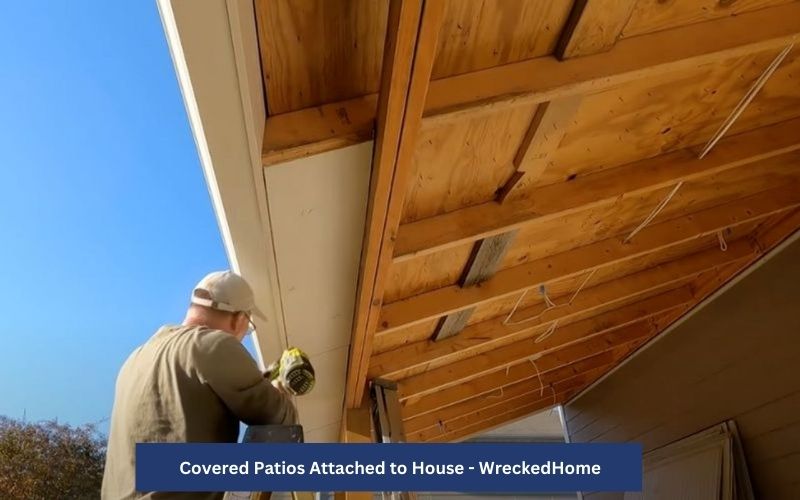
DIY Patio Covers
If you’re handy and love a good DIY project, building covered patios attached to house can be an immensely satisfying and economical endeavor. When you choose the DIY route, you not only have the opportunity to design it exactly how you want, but you can also save significantly on labor costs, which often constitute a large chunk of the total expenditure.
Time Commitment and Skill Level
The time and effort you’ll need to invest in your DIY covered patios attached to house will largely depend on the complexity of the design and the materials used. A basic wooden or fabric cover might require moderate skills and could potentially be completed over a single weekend. However, if you’re envisioning a more elaborate setup with electrical installations you’ll likely need a higher level of expertise and stretch over several weekends.
Your Step-by-Step Guide to Crafting an Attached Patio Cover: A DIY Adventure
Do you ever dream to have a customized patio cover? Yes it looks amazing to have a cozy, stylish space right in your backyard. This not only increases your home worth but also amazes your guest. Well, you’re in luck! Now you can make your own covered patios attached to house with this step by step adventure guide. From here you can go.
Preparing the Site
When you are ready to craft a patio then you must do the following
- Marking out the Area: First off, stake your claim. You need to use stakes and string to clearly outline the dimensions of your patio on the ground.
- Excavating, if necessary: Depending on the design and local building codes, you may need to dig out the marked area to a certain depth to lay a sturdy foundation.
Laying the Foundation
Now the time is lay the groundwork for your DIY masterpiece. You have a multiple of options like
- Pouring Concrete: add concrete which is basic step of patio. But before it thins you must consider leveling your yard area where you are making the patio.
- Setting Pavers: If you prefer a more textured look you can also use pavers as a foundation. Make sure to lay a base layer of gravel and sand for good drainage.
Building the Main Structure
Once you are done with the base of your patio now the next step is to build a skeleton
- Erecting Posts: It’s time to put up those posts securely with the help of post anchors for extra stability.
- Setting Beams and Rafters: Once the posts are in place, attach horizontal beams to your posts to outline what will soon become your dream patio cover.
Attaching the Roof
- Process and Materials: attaching to the roof is last but not the least point. Based on your chosen material—wood, aluminum, fabric, or glass— make sure to follow the material-specific guidelines to attach the roof securely.
- Finishing Touches
Once you ensured that your roof is done and patio is prepared now is the time is to make it aesthetically appealing based on the material that you used. For example, if you’ve used wood in covered patios attached to house, consider staining or painting it for added protection and a dash of charm. For added comfort, install electrical fixtures to ensure they’re waterproof and wired safely. To make it stylish add comfy furniture like a table, chairs and some other decorative objects.
Conclusion
In summary, building covered patios attached to house is a significant investment with costs between $2,000 to $30,000 depending on materials and design. Planning and budgeting are crucial for success whether you choose to hire a contractor or take the DIY route.
For any repairs, installations, builds, or questions; We recommend you to hire a professional. Find A Pro Near You Here!

